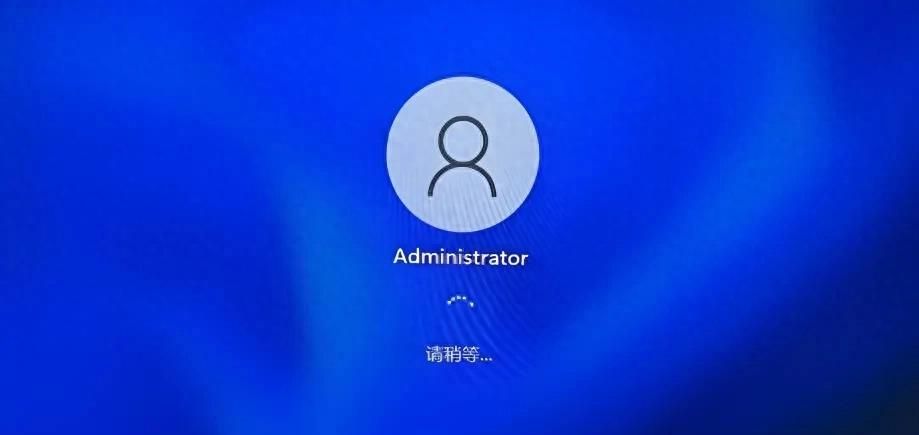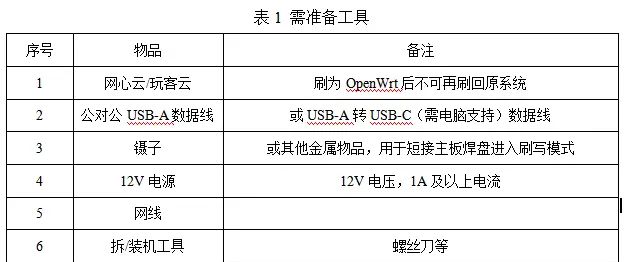文章目录
1. with
伴随
1.表示“跟人或物”的伴随
2.“行为”和“状态”的伴随
2. of
所属关系
1. 人或物的所属关系
2. 比较抽象的所属关系
3. 关于……的……
3. in
1. 在……中,在……范围里
2. 在某一段时间
3. in + 具体时间
4. in + 专业/学科/知识/技能/…
4. on
1. 表示地点:在……上
2. 表示时间:在某一天
3. 关于某个主题
5. at
1. at + 具体时间点
2. at + 位置/地址
3. at work
in、on、 at对比
6. from
1. from … (时间)
2. from … (时间) to … (时间)
3. from … (地点)
4. from … (地点) to … (地点)
5. 表示某人/某事/某种感觉的来源;从….来
7. for
by
介词是一种用来
连接名词、代词或动名词
与句中其他成分的词,表示这些成分之间的时间、地点、方向、方式、原因、关系等。
先通过一个中文的例子,快速了解下介词是什么。
1.比如:“我站在船头”,句中的“在”把动作“站”和地点“船头”连在一起,说清楚了我“在哪里”以及“干什么”。
2.像“在”这样的词,就是介词。它们就像粘合剂,把单词和单词粘在一起,告诉我们什么时候、在哪里或怎么做等细节,使句子含义更加丰富和具体。
1. with
英 /wɪð/
美 /wɪð; wɪθ/
with是英语中非常常见且多功能的介词,其核心含义是 伴随 或 具有
with
含义:表示伴随
跟“人/事物”的伴随;
比较抽象的伴随,比如“状态、品质等”。
伴随
1.表示“跟人或物”的伴随
你想说:我跟朋友一起去了公园。思考下,你会怎么说?
I went to the park with friends.
这句话代表了介词with的常见用法,表示“伴随”。with除了表示像“跟朋友一起”这样,跟“人”的伴随,还能延伸出更多用法
我点了一杯加糖的咖啡。
I ordered a cup of coffee with sugar.
加糖的咖啡,其实就是这杯咖啡“伴随”了糖。这种跟“某物”的伴随,也可以使用“with”。
He cut the meat with a knife.
他用刀切肉。
He wrote the letter with an expensive pen.
他用一支昂贵的钢笔写了这封信。
I bought a book with a nice cover.
我买了一本封面很好看的书。
2.“行为”和“状态”的伴随
我小心翼翼地关上了窗。
I closed the window with care.
这个句子 “I closed the window with carefully.” 是错误的❌。
| 错误表达 | 正确表达 | 说明 |
|---|---|---|
| I closed the window with carefully ❌ | I closed the window carefully ✅ | 直接用副词修饰动词 |
| I closed the window with care ✅ | “care”为名词,符合“with + 名词”结构 |
📌 原因解释:
“with” 是介词,后面必须接一个名词或名词短语,但 “carefully” 是副词,不是名词,所以不能这样用。
He faced the challenge with determination.
他坚定地面对挑战。
She handled the situation with patience.
她耐心地处理了这种情况。
2. of
英/ɒv; əv/
美/ʌv; əv/
of
用法:表示所属关系
人或物的所属关系.
比较抽象的所属关系,比如由某件事情产生的感受等.
所属关系
1. 人或物的所属关系
表示所属关系,被属于的在of 前,而拥有者在of 后
of 表示所属关系
比如:
the leaves of the tree(树上的叶子)
the chapter of the book(书中的章节)
the colors of the painting(画中的颜色)
the capital of China(中国的首都)
employees of the company(公司的员工)
2. 比较抽象的所属关系
of 还可以表示比较抽象的所属关系,
你听了一位名人的演讲,深受启发。你想说:我感受到了演讲的力量。
I felt the power of speech.
the pain of failure(失败的痛苦)
the joy of reading(阅读的快乐)
the power of speech(演讲的力量)
…
3. 关于…的…
他表达了他对著名歌星的看法。
He expressed his opinion of the famous singer.
使用of来表达什么关于什么的时候,英语习惯把主题放在前面A of B中,A通常是描述特征,B是被描述的主题或对象,顺序不要搞反了。
of
含义:关于…的…A of B : 关于B的A
The story of his journey is quite fascinating.
他的旅程故事非常迷人
He has a deep understanding of mathematical theories.
他对数学理论有深刻的理解。
There were signs of improvement in the student’s performance.
学生的表现有改善的迹象
他的旅程故事非常迷人。
His journey of story is quite fascinating.
❌ 你写的句子:
His journey of story is quite fascinating.存在的问题:
“journey of story” 这个短语不地道。英文中一般说 “his story” 或 “his journey”,但不说 “journey of story”。
“His journey of story” 的结构有语法问题,听起来像是两个名词强行拼在一起。The story of his journey is quite fascinating.
👉 如果你想保留“story”和“journey”两个词,这是最自然的组合方式。
——> story of his journey
——> 关于他旅程的故事
——> of:关于
“story of his journey”的意思是“他旅程的故事,“of”表明“故事”是关于“他的旅程”的。
他对数学理论有深刻的理解。
He has a deep understanding of mathematical theories.
——> deep understanding of mathematical theories
——> 关于数学理论的深刻理解
——> of:关于
“deep understanding of mathematical theories”的意思是“对数学理论的深刻理解,“of”表明“深刻理解”是关于“数学理论”的。
例句:There were signs of improvement in the student’s performance.
翻译:学生的表现有改善的迹象。
——> signs of improvement
——> 关于改善的迹象
——> of:关于
“signs of improvement”的意思是“改善的迹象”,“of”表明“迹象”是关于“改善”的。

“成名的故事”可以写成:the story of his rise to fame
“心理健康的重要性”可以写成:the importance of mental health
“那个时期建筑风格的经典例子”可以写成:a classic example of the architecture of that period
3. in
“in”和“on”与时间、地点息息相关

1. 在…中,在…范围里
in 在……中,在……范围里
用法:
描述的是某个区域或空间内部,常常与城市、国家或者某个有边界的空间等连用。
表示抽象的范围,比如研究范围、经验范围等。
例如:
in Chengdu
in the museum
in my mind
in my research
…
在我看来这个计划很完美
The plan is perfect in my mind.
“在我看来”是说在“我的思想中”,是一种抽象的范围,用“in”。
我把钥匙落在了办公室的桌子上
I left the keys on the desk in the office.分析:
“office”是一个有边界的空间,用“in”,“desk”是一个平面,用“on”。“in the office”和“on the desk”都是地点,一般来说我们会把小地点放在大地点前面,所以这里先用”on the desk“再用”in the office“。
你可以在这条街上找到这个城市最好的甜点
You can find the best desserts in the city on this street.分析:
“city”是一个城市范围,用“in”,“street”指具体的一条街,用“on”。
2. 在某一段时间
in
含义:在某一段时间:
季节、月份、世纪、时期等一段时间
例子:
in December、
in the 19th century、
in winter、
in the Renaissance period
…
3. in + 具体时间
in + 具体时间
含义:不超过某个时间例子:
She can run a kilometer in five minutes.
她五分钟之内可以跑一公里。
I could finish the job in two hours.
我两小时之内可以完成这份工作。
The deadline for submissions is in two weeks.
提交截止日期是两周之内。
Dinner is ready in ten minutes.
晚餐还有十分钟就好了
in ten minutes
—> 不超过十分钟
—> in + 具体的一段时间 = 不超过(具体时间)
4. in + 专业/学科/知识/技能/…
in + 专业/学科/知识/技能/…
含义:在······领域例子:
She is highly skilled in culinary arts.
她在烹饪艺术方面技艺高超。
Success in sports requires discipline and hard work.
在体育方面取得成功需要纪律和努力。
Effective communication is crucial in leadership roles.
在领导职位中,有效的沟通至关重要。
这家公司大力投资于研发。
(请你用in造句,heavily 大力地;invest 投资;research and development 研发)参考答案:
The company invests heavily in research and development.
可以把“研发”看作一个领域,对这个领域进行投资可以用“in”。
我们需要在两天之内完成这份报告。
参考答案:
We need to finish the report in two days.
“两天内”表示不超过两天,可以用“in”来表示在某个时间内。

4. on
1. 表示地点:在…上
On
含义:在······上
一般表示在某个表面或平面上;
表示在除了车以外的交通工具上(例如:公交车、飞机、地铁、邮轮等);
在某个主题上;
用法:
on the table、
on the screen、
on the bus、
on the First Avenue、
on math
我再海滩上度过了假期
I spent the holiday on the beach.分析:
海滩是一个平面,可以用“on”。“on the beach”是一个地点,修饰整个句子。
我们周一讨论了小组作业。
We had a discussion on the group work on Monday.
分析:
这里有两个可以用“on”的地方,一个是“讨论的主题”是“小组作业”,一个是时间“在星期一”。
2. 表示时间:在某一天
on
含义:在某一天
具体的某一天
星期几
用法:
on Sunday、
on May 5th、
on my birthday、
on New Year‘s Day
3. 关于某个主题
on 关于某个主题
例如:on math 、
on the new policies、
on history
5. at
我会在下午1点给你回电话
I will call you back at 1 p.m.
1. at + 具体时间点
at用法:
具体时间点(at 9 o’clock、at 3 p.m.)
在晚上/中午(at night、at noon)
三餐或者休息期间(at lunchtime、at breakfast、at break time)
在节日期间(at Christmas、at New Year、at Spring Festival)例句:
I like to read the newspaper at breakfast (time).
我喜欢在早餐时读报纸。
I usually take a short walk at break (time).
我通常在休息时间散步一下。
We will meet at dinner (time) and discuss the project.
我们将在晚餐时见面,来讨论这个项目。
at + 具体时间点
含义:在某个时间
例句:The store closes at 10:00 p.m.
这家商店在晚上10点关门。
The concert will begin at 8:00 p.m.
音乐会将于晚上8点开始。at night(在晚上)
at noon(在中午,一般指12点前后)
in the morning/afternoon(在早上/下午)
2. at + 位置/地址
“at the airport”、 “at a fancy restaurant”和“at home”都是具体的位置,都可以用“at”来表达。
at
含义:在某处
用法:表示某个准确的位置或者地址
例子:at the back door
at the conference room
at John’s house
at the back of the classroom
3. at work
at work
含义:在工作/在工作的地方
用法:可以指工作的地点
也可以指工作的状态例句:She is very focused and productive at work.
in、on、 at对比

at the car
——>在车所在的地点
——>将位置看作一个点,用atin the car
——>在车里,在车的空间范围内
——>将位置看作一个范围,用inon the car
——>在车上,小鸟在车的顶篷
——>将位置看作一个平面,用on之所以使用不同的介词,是因为看待“车”的视角不同。把车分别看作一个地点、一个空间范围以及一个平面,就可以分别对应地用上at、in和on了。三种用法都是合理的。
6. from
The new semester starts from September 1st.
新学期从9月1日开始。
1. from … (时间)
from + 某个时间点
—> 从······时候开始I’ve known him from the first day of school.
我从开学第一天就认识他了。
She started her career in journalism from a very young age.
她从很小的时候就开始了她的新闻事业。
2. from … (时间) to … (时间)
博物馆每天从早上10点开到下午5点。
The museum is open from 10 a.m. to 5 p.m. every day.
from 10 a.m. to 5 p.m.
—>从早上10点到下午5点
from … to …
—> 从······时候到······时候The art festival lasts from May to July.
这个艺术节从五月持续到七月。
Their relationship endured from their teenage years to their golden anniversary.
他们的关系从青少年时期一直持续到他们的金婚纪念日。
你想说:“这个展览展示了从18世纪到现代的艺术作品。”
(参考词:展览 exhibition;展示 display;艺术作品 artwork;世纪 century;现代 present)
The exhibition displays artworks from the 18th century to the present.
3. from … (地点)
from … (地点)
含义:从······地方出发
例句:The bus departs from the central station at 9 a.m.
4. from … (地点) to … (地点)
from … (地点) to … (地点)
含义:从······某地到······某地
例句:The bus departs from the central station to London at 9 a.m.
你想写:商家从北京的仓库发货。
(参考词:发货 ship;商家 merchant;仓库 warehouse;包裹 package)
The merchant ships the package from the warehouse in Beijing.
参考答案:The merchant ships the package from the warehouse in Beijing.
分析:
“从北京的仓库”表示“北京”是地点的开端,可以用“from”;
而“北京的仓库”说明“仓库”在“北京”,“北京”是一个比较大的范围,强调在这个范围里要用“in”。
你想写:我们很喜欢从山区自驾到海岸。
(参考词汇:海岸 coast)
参考答案:We like to drive from the mountains to the coast.
分析:
“从山区到海岸”表示“山区”是地点的开端,“海岸”是终点,可以用“from … to …”。
你想写:酒店离餐馆只有几步之遥。
(参考词:几个 a few;步 step;餐馆 restaurant)
参考答案:The hotel is a few steps from the restaurant.
分析:
“离餐馆”表示“餐馆”是地点的开端,可以用“from …”。
5. 表示某人/某事/某种感觉的来源;从…来

7. for
含义:表示做某事的原因,一般用于补充解释。
“He is famous for his expertise in robotics.”这句话的意思是:
他因为在机器人领域的专长而闻名。
——> 因为他的专长而闻名
——> for:表原因
He received a fine for speeding.
翻译:他因为超速而被罚款。
——> a fine for speeding
——> 因为超速被罚款
——> for:原因
“a fine for speeding”的意思是“因为超速被罚款,“for”表明“罚款”的原因是“超速”。
她因为努力工作而获得了奖金。
She got a bonus for her hard work.
——> a bonus for her hard work
——> 因为努力工作而获得了奖金
——> for:原因
“a bonus for her hard work”的意思是“因为她的努力工作而获得了奖金”,“for”表明“获得奖金”是因为“她努力工作”。
例句:The teacher praised the student for her innovative idea.
翻译:老师因为学生创新的想法而赞扬了她。
——> praise the student for her innovative idea
——> 因为学生创新的想法而赞扬了她
——> for:原因
“praise the student for her innovative idea”的意思是“因为学生创新的想法而赞扬了她”,“for”表明“学生被赞扬”是因为“她创新的想法”。I’m studying Spanish for my upcoming trip to Spain.
我为了即将到来的西班牙之旅正在学习西语,“for”在这里补充解释“我学习西班牙语”的原因。
They are campaigning for environmental awareness.
他们正在为提高环境意识而进行宣传活动,“for”在这里补充解释“他们进行宣传活动”的原因。
“这篇文章提供了对当前经济状况的分析。”
The article offers an analysis of the current economic situation.
这里的“analysis”是关于“the current economic situation”的,所以用“of”。
“这首歌因为它美丽的旋律收到了很多积极的评价。”
The Song received a lot of positive comments for its beautiful melody.
这里的“beautiful melody”是“received a lot of positive comments”的原因,所以用“for”。
“他因为缺乏对文化差异的意识而道歉。”
He apologized for his lack of awareness of cultural differences.
这里的动作是“apologized”,而“his lack of awareness of cultural differences”是道歉的原因,所以用“for”;
“lack”的意思是缺少,而“awareness”是缺少的东西,用“of”;
“awareness”是关于“the cultural differences”的,所以用of。
by























暂无评论内容